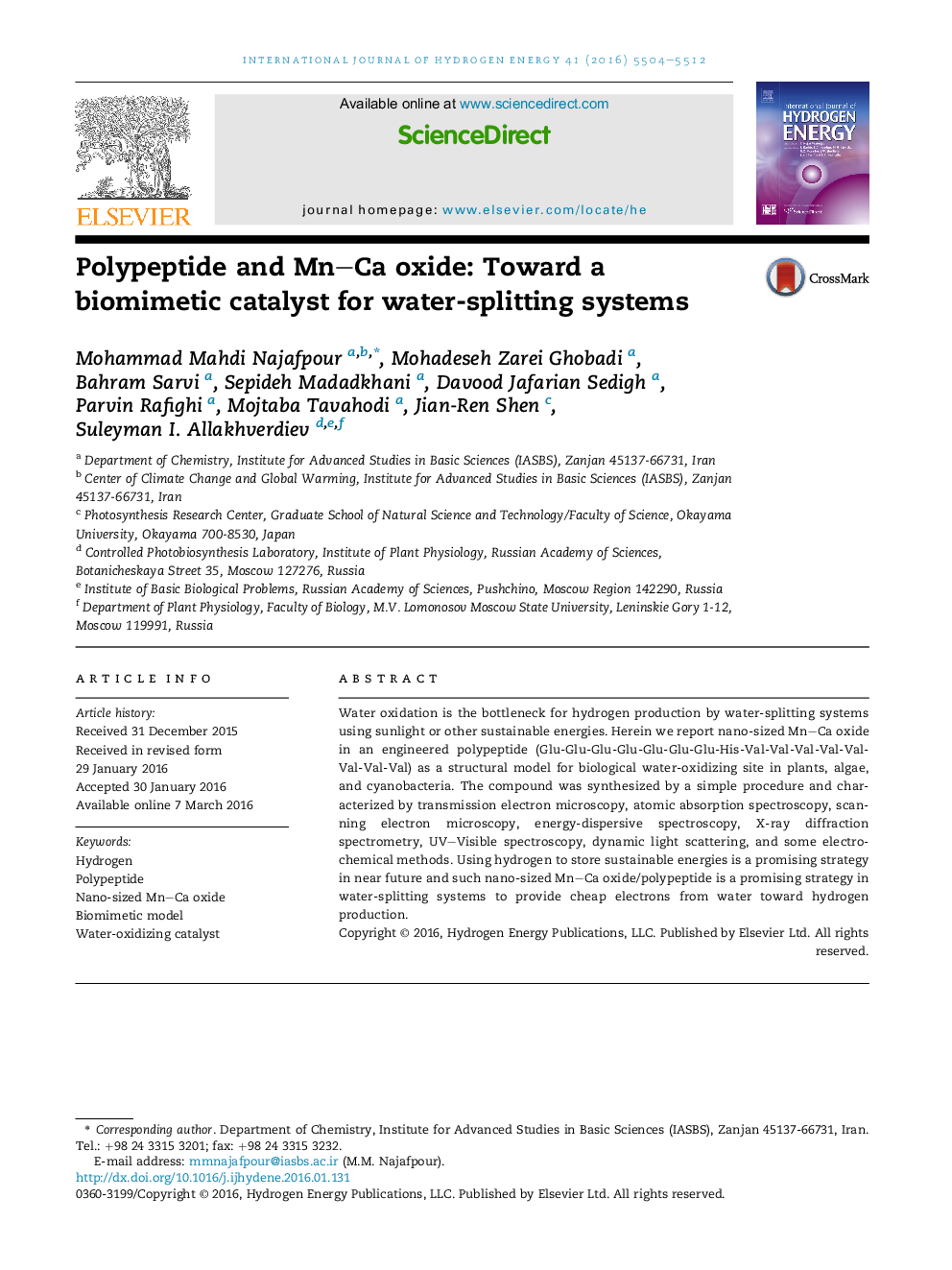| Article ID | Journal | Published Year | Pages | File Type |
|---|---|---|---|---|
| 1268791 | International Journal of Hydrogen Energy | 2016 | 9 Pages |
•Photosystem II consists of hundreds of amino acids.•The design and synthesis of efficient and stable water-oxidizing compounds are desirable.•Photosystem II is a blueprint for artificial photosynthetic systems and hydrogen production.•A nano-sized Mn oxide with an engineered polypeptide-matrix was reported.
Water oxidation is the bottleneck for hydrogen production by water-splitting systems using sunlight or other sustainable energies. Herein we report nano-sized Mn–Ca oxide in an engineered polypeptide (Glu-Glu-Glu-Glu-Glu-Glu-Glu-His-Val-Val-Val-Val-Val-Val-Val-Val) as a structural model for biological water-oxidizing site in plants, algae, and cyanobacteria. The compound was synthesized by a simple procedure and characterized by transmission electron microscopy, atomic absorption spectroscopy, scanning electron microscopy, energy-dispersive spectroscopy, X-ray diffraction spectrometry, UV–Visible spectroscopy, dynamic light scattering, and some electrochemical methods. Using hydrogen to store sustainable energies is a promising strategy in near future and such nano-sized Mn–Ca oxide/polypeptide is a promising strategy in water-splitting systems to provide cheap electrons from water toward hydrogen production.
Graphical abstractA polypeptide around nano-sized manganese–calcium oxide was reported as a promising catalyst toward water oxidation in water-splitting systems.Figure optionsDownload full-size imageDownload as PowerPoint slide
